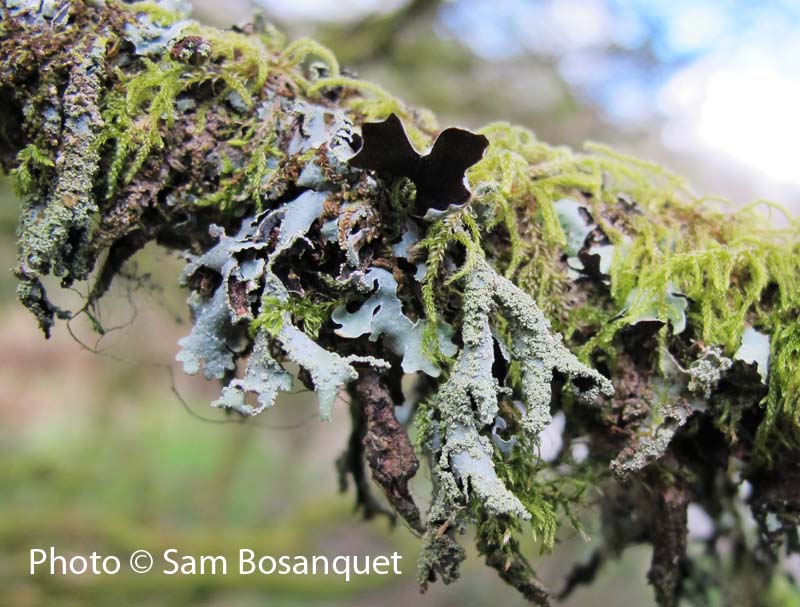 Parmelia submontana is a foliose lichen characterised by long, pendent lobes folded into a tube, and by coarse soredia. Until very recently was unknown in Wales, and it was only discovered in Britain for the first time in 1991 (in Scotland, where it is now known from two sites). In Autumn 2011 it turned up in Devon, which suggested it might also be lurking undiscovered somewhere in Wales.
Parmelia submontana is a foliose lichen characterised by long, pendent lobes folded into a tube, and by coarse soredia. Until very recently was unknown in Wales, and it was only discovered in Britain for the first time in 1991 (in Scotland, where it is now known from two sites). In Autumn 2011 it turned up in Devon, which suggested it might also be lurking undiscovered somewhere in Wales.
The eagle-eyed and indefatigable Sam Bosanquet of the Countryside Council for Wales had read about P. submontana in one of Sandy Coppins' lichen reports in British Wildlife magazine, and was on the lookout. He was rewarded in ealy April this year when he discovered it on willow and sycamore at a site just outside the boundary of the Brechfa Forest east of Gwernogle, Carmarthenshire. It was growing here in some abundance, as it apparently does at its other British sites.
This is a very distinctive species and well- worth keeping a lookout for in other parts of Wales. Its habitat requirements are not clear-cut: It is described as boreal-montane and is mostly known outside Britain from montane regions of Europe, Macaronesia, Asia and Africa. In Britain it has been found in upland wayside or open-woodland situations on beech, willow and sycamore, but also on gravestones and wooden garden tubs! The Devon record was from "ten willows in a boggy valley on Dartmoor.
